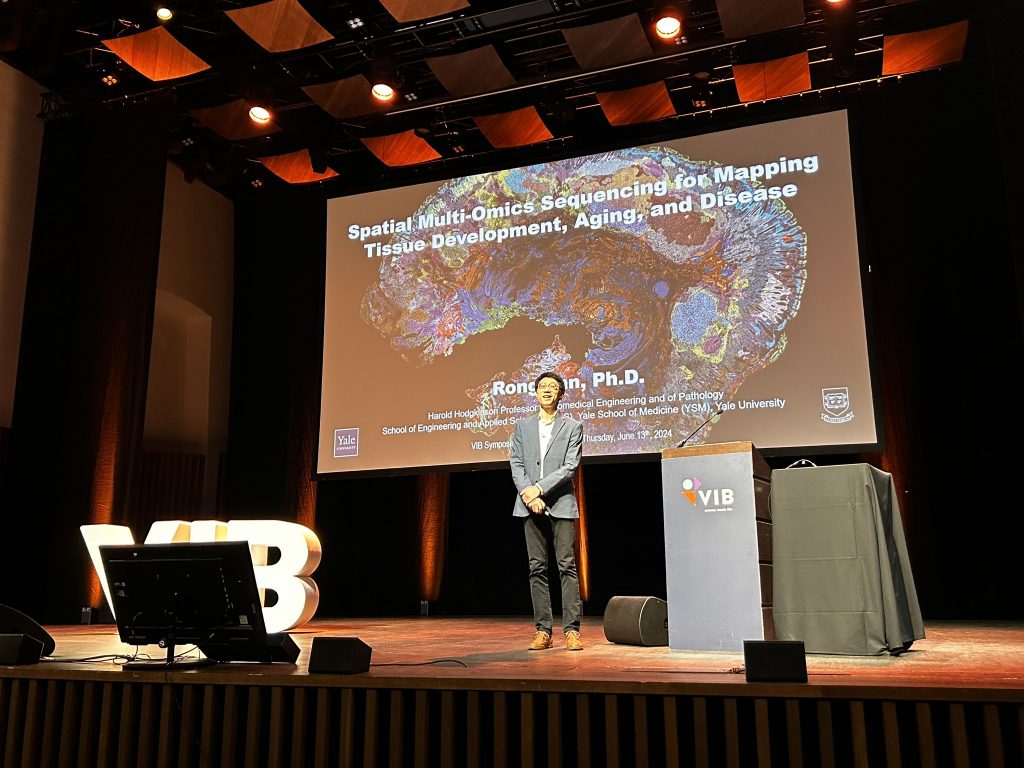Continuing Journeys in Space: Human Cell Atlas Asia and Our Spatial Omics Series

Human Cell Atlas Asia 2024: A Spatial Omics
The GigaScience Press Cross Journal (GigaScience and GigaByte) series on “Spatial Omics: Methods and Application” continues to receive and publish submissions. Promoting and providing a home for cutting edge research in new field taking large-scale data-rich biological and biomedical research into new dimensions. This month new papers present new tools StereoSiTE, a framework to profile the immune tumor microenvironment; and stMMR, a new tool to explore and characterize tissue architectures using multimodal feature representation. Other submissions are under review, and we’ve had a lot of positive discussions with potential authors at conferences about future submissions as this seems to be an extremely topical and timely field that is exploding. And for research in this field to continue to progress at this rate, new algorithms, methods and tools for spatial omics technology are essential.
We had the pleasure to attend the “Spatial Omics – A VIB Tools and Technologies“ conference in Ghent this summer, and get a taste of the excitement in this new field. You can see the trajectory of a field when a brand new conference had over 400 registrants, and we got to geek out with the attendees on all the new methods and tech on display. With huge amounts of the latest unpublished work on show, and impressive scene setting keynotes from the pioneers of the field Joakim Lundeberg and Rong Fan.

Lift off for Human Cell Atlas Asia
This week we have the pleasure of launching into the world of Spatial technologies again, with the Human Cell Atlas Asia 2024 meeting coming to Hong Kong. For once we don’t need to spatially travel far, with the meeting being held right by our office in the Hong Kong Science Park. Dubbed a ‘Wikipedia” or “Periodic Table” for cells’, the project has the monumentally ambitious goal of cataloguing every cell type in the human body. The Cell Atlas approach utilises the Spatial Omics methods and data-types we’ve been looking in the series, but moves it into further dimensions. Taking the 3D maps of cells in the body across modalities and scales, connecting genotype causes to phenotype effects, and creating 4D maps of development.
The consortium has also thought spatially in terms of participation and sampling, as an an open global initiative it has over 3600 members from over 100 countries, and crucially coordinated via regional (and biological) networks in Africa, Asia, Latin America and the Middle East. Initiated and led by researchers in these areas to articulate priorities relevant to the populations they serve and ensure that the atlas as a whole serves all parts of the world. This Hong Kong based meeting providing a venue for the Asian Network to gather, and get updates from the main consortium leads at a very topical and important time to meet. The consortium entering a crucial phase of data integration towards the assembly of the first draft atlas, and with the coordinated publication in Nature journals this month of the first cell-type reference-atlases, methods, ethics and data-sharing toolkits, and other related content. These hot-off-the-press papers, giving the research community a shot in the arm of excitement and energy, and providing a staging point and further insight in what lies ahead as they work towards a 37.2 trillion cells model. We look forward to learning and talking more with the Human Cell Atlas Asia community, participating in these steps taking biological research into further dimensions, and finding more exciting content for our Spatial Omics: Methods and Application series.
We have an author video with Yuxian Li from BGI Research talking about his papers that came out in the launch of the series earlier in the year.
For more on the work published so far see:
GigaByte Journal series page: https://doi.org/10.46471/GIGABYTE_SERIES_0005
GigaScience Journal Series page: https://academic.oup.com/gigascience/pages/spatial-omics-methods-and-applications
References
Nature Collection: The Human Cell Atlas: towards a first draft atlas https://www.nature.com/immersive/d42859-024-00060-5/index.html
Liu X et al. StereoSiTE: a framework to spatially and quantitatively profile the cellular neighborhood organized iTME, GigaScience, Volume 13, 2024, giae078, https://doi.org/10.1093/gigascience/giae078
Zhang D et al. stMMR: accurate and robust spatial domain identification from spatially resolved transcriptomics with multimodal feature representation, GigaScience, Volume 13, 2024, giae089, https://doi.org/10.1093/gigascience/giae089